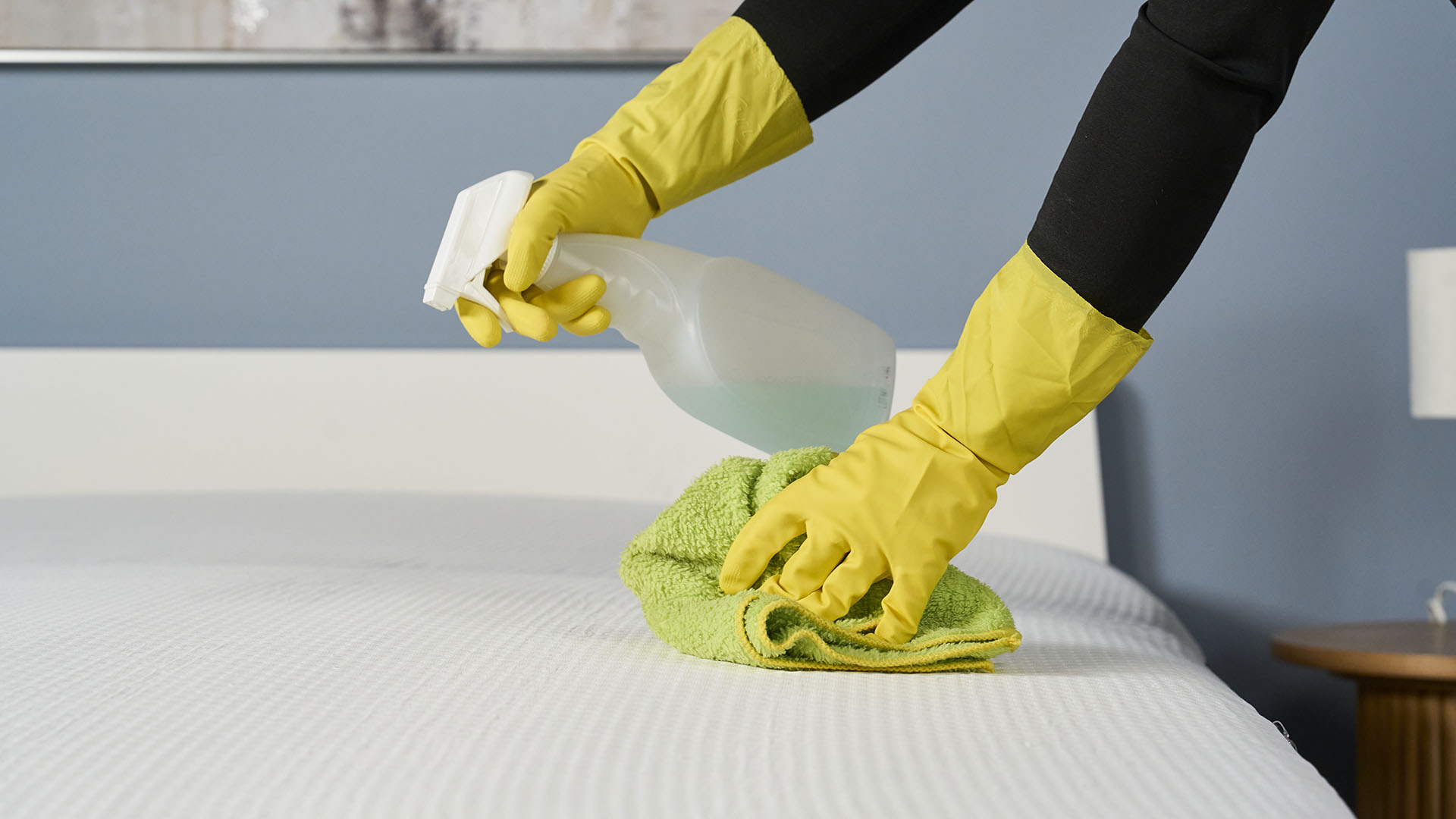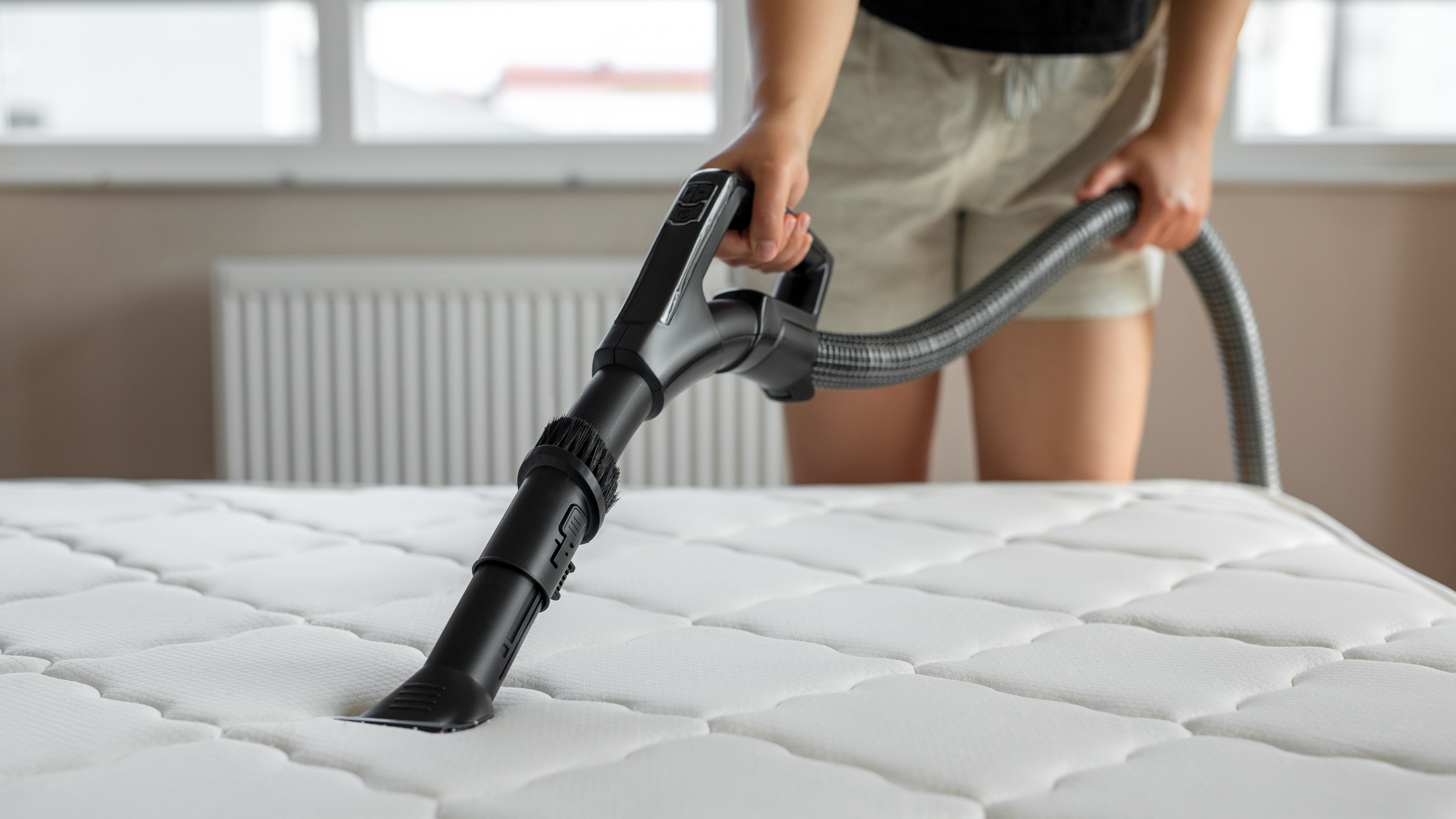How to clean luxury, organic and natural mattresses — pro tips for cleaning premium materials
How to clean your luxury, natural or organic mattress like a professional

If you’ve just invested in a luxury, organic or natural mattress then you'll want to get as many years of use out of your new bed as possible, which means knowing exactly how to take care it.
Many of the best mattresses for all sleep styles are crafted from natural materials, including natural latex, organic cotton and wool. These quality materials deserve the best care, and often require special attention and proper cleaning techniques to avoid damage.
If, during your deep clean, you decide that you'd be better off buying a new mattress, you've picked a good time. We're expecting deep discounts from top-rated brands in the upcoming Presidents' Day mattress sales, which means you'll be able to pick up a great deal. But for now, we're going to share some pro cleaning tips to help you keep your luxury mattress clean, fresh and in great condition.
What is an organic or natural mattress?
The best organic mattresses are beds made from naturally sourced, non-synthetic materials. The materials used are typically organic cotton, natural latex and organic wool.
To be certified as organic, these materials must meet strict standards set by organisations such as GOTS (Global Organic Textile Standard) or GOLS (Global Organic Latex Standard).
Organic and natural mattresses are designed to offer sleepers as chemical free sleep surface (great for those with allergies and sensitivities) whilst reducing environmental impact, since they avoid the use of synthetic foams, chemical flame retardants and glues.
What you need when cleaning luxury, organic and natural mattresses
The first step in cleaning your organic or natural mattress is gathering the right tools and materials. Here’s everything you'll need...
Sign up to get the BEST of Tom's Guide direct to your inbox.
Get instant access to breaking news, the hottest reviews, great deals and helpful tips.
- A household vacuum cleaner
- Cloth or paper towels
- Water and white vinegar (or mild laundry detergent)
- Baking soda
- Spray bottle
- Essential oil (optional)
How to clean luxury, organic and natural mattresses
Step 1. Prepare your area
Before you start cleaning your mattress you’ll need to prepare the space. We recommend gathering all your cleaning supplies together so you can tackle the job all at once and opening your windows to allow for good ventilation and to get some fresh air circulating.
Then, strip all the bedding, including your mattress protectors, and put these on a hot wash whilst you undertake the cleaning tasks.
Step 2. Vacuum the surface
The next step is to vacuum the surface of your mattress.
You don’t need a specialist vacuum cleaner for this job, you can use your household vacuum, just be sure to use the upholstery attachment so that you don’t risk any damage to the mattress fabric. Pay special attention to the seams and crevices, (so that you completely remove all dead skin cells, dust, dander or other allergens) and don’t forget to vacuum the sides and your bed frame.
Step 3. Spot clean stains

If you notice any stains when you’ve stripped your bed then it’s best to tackle this as soon as possible. A simple, natural cleaning solution can be made by combining one cup of white vinegar and one cup of water in a spray bottle (alternatively, you can add a few drops of natural laundry detergent to a spray bottle of water).
Spray the cleaning mixture over the area, being mindful not to over-saturate the fabric.
Then, taking a clean cloth or paper towel, blot the area and continue to do so until the cloth comes up dry. You may have to repeat this process a couple of times if the stain has set in. Finally, leave to dry fully (though avoid using heat to speed up this process as it can damage your natural mattress) before moving on to the next step.
Step 4. Deodorize
This next step is a great, natural way to freshen up your bed once you've removed any stains. Sprinkle a layer of baking soda evenly across the surface of your mattress (you can also add a few drops of your favorite essential oil beforehand). A top tip for this step is to use a flour sifter when spreading the baking soda to avoid clumping.
Leave it sit on your mattress for between 4 and 6 hours — although if possible, give it longer.
Step 5: Vacuum the surface again

Once your baking soda has rested, it’s time to vacuum the surface of your mattress again.
Use your upholstery attachment and vacuum from the top and work downwards in overlapping strips, using slow and deliberate movements. Go around the edges and the crevices again so you get all the baking soda off the surface.
If you haven't already, consider opening the windows to let the air circulate for at least 20 minutes after you’ve finished vacuuming for an extra fresh feel. And don’t forget to make sure that your mattress is completely dry before you put your bedding back on, as any dampness could lead to mattress mold and mildew growth.
5 dos and don’ts of cleaning luxury, organic and natural mattresses
DO use natural, gentle cleaning solutions: When it comes to cleaning your mattress, stick to mild, natural cleaning agents like diluted white vinegar, mild laundry detergent and baking soda. These options are effective at cleaning without compromising the organic materials.
DON’T oversaturate your mattress: Never soak your mattress whilst you’re cleaning and always ensure that your mattress is fully dried before adding your bedding back on. Excess moisture can lead to mold and mildew, especially when it comes to natural materials like wool and cotton.
DO undertake regular mattress maintenance: If you want the most out of your investment then it’s really important to look after your bed. Always use one of the best mattress protectors, change your sheets on a weekly basis and vacuum at least once a month but if possible more often.
DON’T use heat: If you have a luxury mattress that uses natural or organic materials then you should avoid applying heat. Always check the care label on your bed, but generally steam cleaning or using a hairdryer or heater to dry your mattress is not recommended. Heat can break down natural fibers like wool and latex, potentially damaging their structure and causing clumping and shrinkage.
DO spot clean immediately: Accidents and spills happen, but always address them as soon as possible. Stains that are left can soak in to the mattress fibers and cause mold, smells and even damage.

Rachael is a freelance journalist based in South Wales who writes about lifestyle, travel, home and technology. She also reviews a variety of products for various publications including Tom’s Guide, CreativeBloq, IdealHome and Woman&Home. When she’s not writing and reviewing products she can be found walking her Sealyham and West Highland terrier dogs or catching up on some cringe-worthy reality tv.
